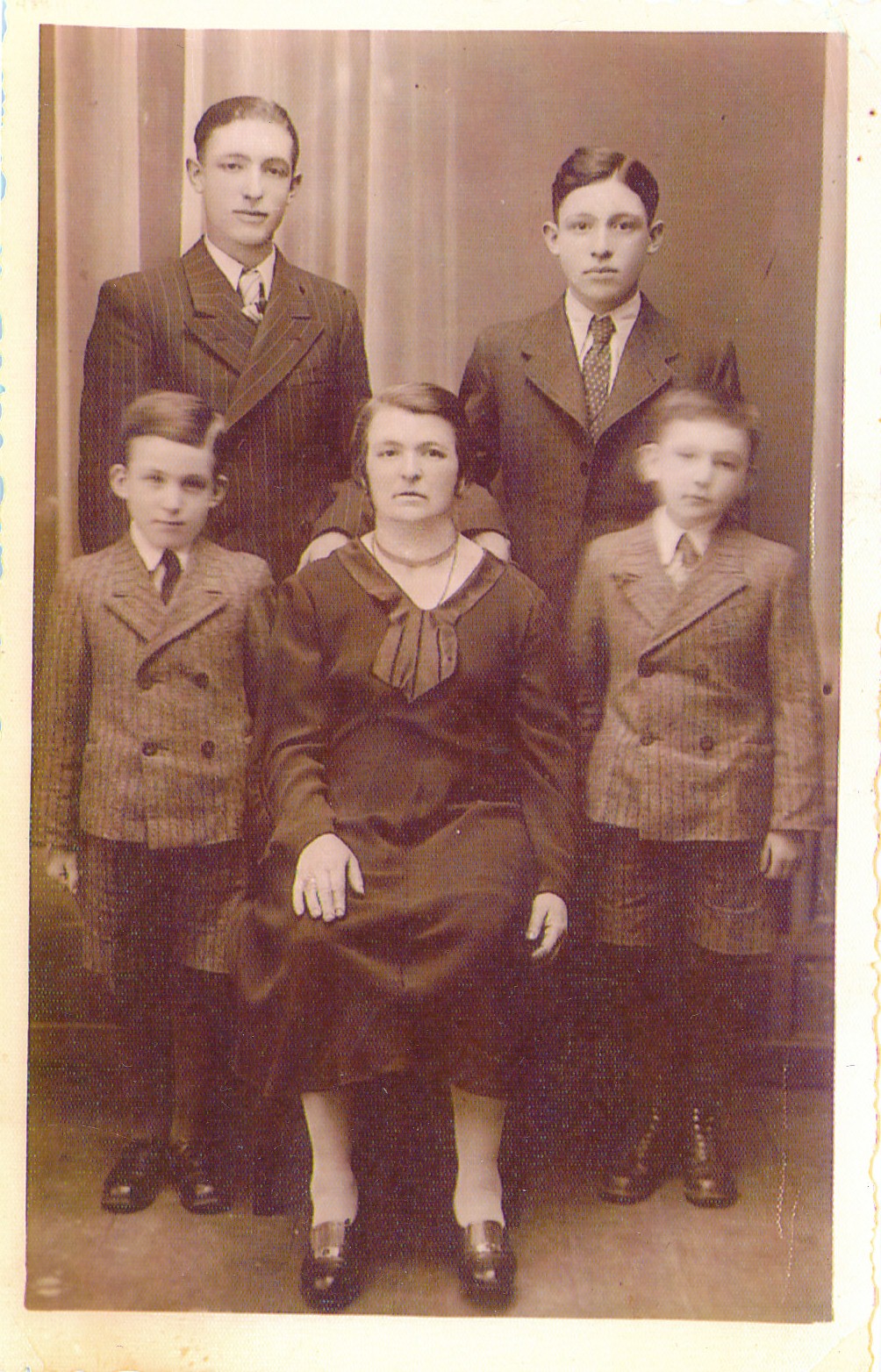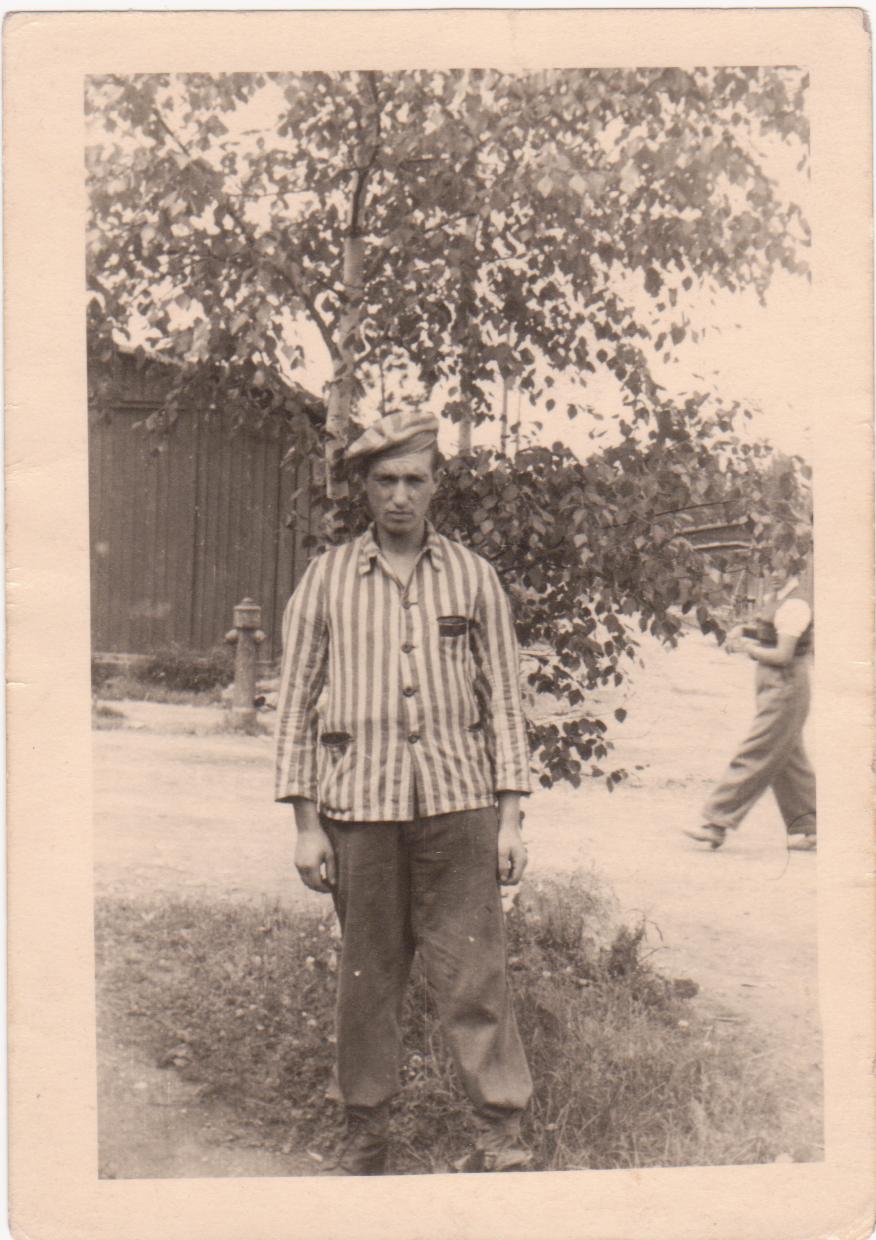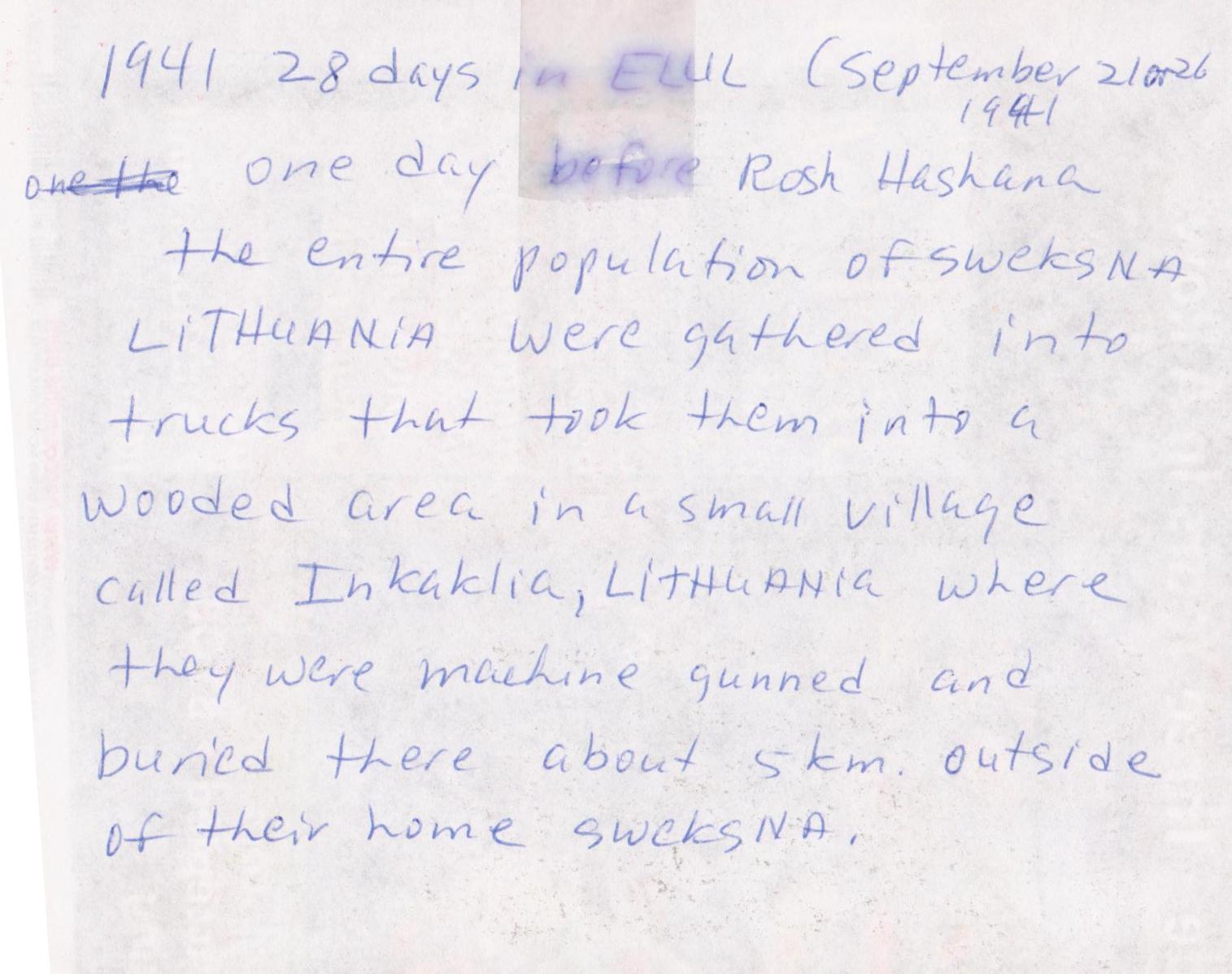 |
Švėkšna,
Lithuania
|
Press Family
By Doctor Shirley Press, e-mail: SPress0602@aol.com
For my father’s history,
I had to rely on documents from the ITS, the United States Holocaust
Memorial Museum, and HIAS (Hebrew Immigrant Aid Society.) I also interviewed
family and friends. According to ITS records, Gershon Press was born on June
14, 1918, in the Lithuanian town of Kovno. There are no records of my
father’s parents Beines and Sonja (nee Cohn) or his younger brothers Beryl,
and twins Meyer and Welrel. The only recollection I have of my grandfather
that my father told us was that he had been drafted into the Russian army
during World War I. My father also had told us that he was really born in
1921 and that his official records were wrong. Sam Sherron who had been a
childhood friend of my father’s brother Beryl confirmed this. Sam had also
been in the Kovno ghetto with my father. They were reunited at the Feldafing
DP (displaced persons) camp in 1945 after both had been in concentration
camps. Afterward, they found each other again in America and grew close.
When I interviewed Sam in 2010 at age 84, he specifically remembered that my
father had been five years older than him. Despite the horrors of the
Holocaust, Sam insisted that my father survived to live the life of "a happy
person.”
Another person who knows
about my father’s past and remembers him very well is our former neighbor,
Jim Serchia – the one who gave us kids nickels and dimes for answering his
current affairs questions correctly. He and my dad were best friends. Jim
said that Gershon had to shoulder a lot of family responsibility after his
father died early from a stroke.
“He had to become the
breadwinner,” Jim said.
Another fact Jim recalled was that sometime during my father’s early
childhood his family moved to Sveksna, Lithuania, not far from the Baltic
Sea. The earliest documentation of this town is in the 14th century
according to Sveksna: Our Town
by Esther Herschman Rechtschafner. She wrote a Jewish history of the town
that is available online at
https://kehilalinks.jewishgen.org/sveksna/.
According to Rechtschafner's research, Jews had a rich past in Sveksna. The
Jewish community dates back from at least the 17th century and was the site
of an important Yeshiva renowned for its brilliant scholars. There was also
plenty of anti-Semitism, which lasted well into the 20th century. As late as
the mid-1930s, a rabbi was accused of killing a Christian boy to use his
blood to make matzoh.
At the time of the 1941
German invasion, my father was living and working in Kovno, which is not far
from Sveksna. His job was shearing the skin off cattle and curing it into
shoe leather. His mother and younger brothers had stayed behind in Sveksna.
The Nazis captured them and murdered them with machine guns, part of the
Germans' large-scale immediate slaughter of the Jews. They were buried in
ditches in a mass grave in Inkakliai, Lithuania, in September of 1941.
My father was arrested on August 15, 1941, at the
age of 20, and was confined in Kovno's ghetto where he endured forced labor.
In 1943, it was converted to the Kovno concentration camp where he became a
slave laborer. On July 29, 1944, he was transferred to Dachau concentration
camp in Germany where he was assigned the number 84847. According to the
reference book Hidden History of the
Kovno Ghetto published by the United States Holocaust Memorial
Museum, out of a total of 235,000 Jews living in Lithuania before the war,
only a few thousand survived.
My father told my sister
and me that he was a baker inside the camp making bread for the German
soldiers. As a result, he was able to hide bread for himself and his
friends. On one of his official documents, his profession was listed as
weaver. As Barb and I were growing up, we saw no evidence of either trade in
his life. He never ever cooked. He never sewed – with one exception; I
remember that my father accidently sliced off the edge of his thumb when
chopping meat in our grocery store. He calmly and without anesthetic sutured
it back together with a needle and thread. He saw a doctor the next day who
said he did a fine job. Perhaps, he really did know how to sew.
Our former neighbor and
friend Jim related this story about our father saying, “He said he was
running away from the Germans during the war and eventually got caught. He
said he was fortunate to have been assigned to a German officer and became
more or less a valet. He would do chores for him.” My father also told Jim
that he remembered the officer as being decent and that he had enough to
eat.
My father was liberated from Dachau by the United
States Army on April 29, 1945. According to ITS records, he was registered
in the DP camp known as Feldafing on October10, 1945. He also spent time in
the Landsberg DP camp, the largest such camp in Europe. In my research, I
came across Colonel Irving Heymont’s description of the camp in
Generations, the United States
Holocaust Memorial Museum’s newsletter, the Fall 2009 edition.
“The camp is filthy
beyond description. Sanitation is virtually unknown,” he wrote in September
1945. “Words fail me when I try to think of an adequate description. The
people of the camp themselves appear demoralized beyond hope of
rehabilitation. They appear to be beaten both spiritually and physically,
with no hopes or incentives for the future…” The colonel underestimated the
resolve of people like my parents and other survivors.
On May 10, 1946,
according to the passenger manifest form, my father boarded the "SS Marine
Flasher" which sailed from Bremen, Germany. The fare was $142, the
equivalent of $1693 in 2013. HIAS and my father’s Uncle Morris and Aunt Rose
assisted my father in leaving his devastated life in Europe. He landed in
New York on May 20, 1946.
His first cousin Betty
Dworkin Ettinger vividly remembers that date because her marriage to Sig
Ettinger took place one day earlier in Philadelphia. They were on their
honeymoon 90 miles north in New York City. Her father, Uncle Morris Dworkin,
knocked on her hotel room door.
“What are you doing
here?” she asked in total shock.
Click here to
view Chapter 7, recounting my father's background, from a book I have
written.
Here are photographs (click on any image for a larger view):
Web Page: Copyright © 2019 Esther (Herschman) Rechtschafner



